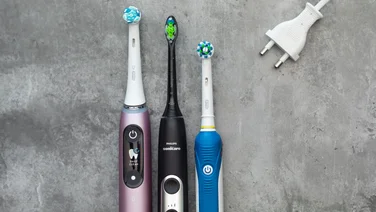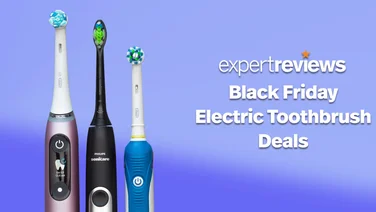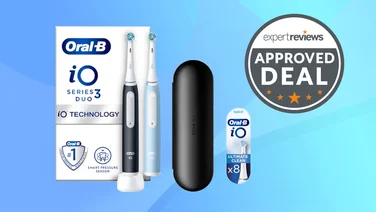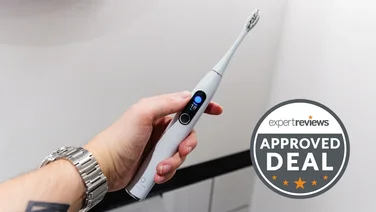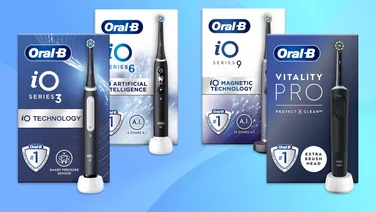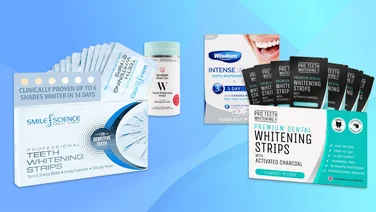To help us provide you with free impartial advice, we may earn a commission if you buy through links on our site. Learn more

Whether you use an electric toothbrush or a manual one, experts recommend changing the toothbrush (or brush head) regularly to maintain the best oral hygiene – every three months if possible. But why is this so important?
We spoke to Dr Alexandra Day, cosmetic dentist at Chelsea & Fulham Dentist, who explained the ins and outs of toothbrush hygiene, and what happens if you don’t change yours regularly.
Why is it important to change your toothbrush regularly?
The best electric toothbrushes are effective because their sturdy bristles are able to successfully sweep food debris and plaque from the surface of your teeth. When used twice a day, every day, your toothbrush bristles will inevitably begin to weaken and splay out.
As a result, the brush is less able to remove food particles and plaque, which, in turn, can cause germs and bacteria to multiply. The bristles can wear down and become uneven, scraping at the gum tissue and potentially inviting more problems, like tooth decay and inflamed gums (gingivitis). Moreover, your toothbrush can harbour bacteria – particularly if it’s not stored properly after use.
It’s also important to remember that while the NHS suggests replacing your toothbrush every 2-3 months, it still depends mostly on your brushing technique: using too much pressure while brushing can cause your toothbrush to wear out more quickly than normal.
READ NEXT: Best Oral-B toothbrushes
How do you know when to change a toothbrush?
If you’re unsure about when exactly to toss out your toothbrush or replace the head on an electric one, watch out for these visual clues:
Splaying bristles – When the bristles have begun to lose their stiffness and are looking suspiciously bendy, it’s nearly time for a new brush.
Indicator bristles – Some brushes have coloured indicator bristles that fade in accordance with the brush’s expiration.
Indicator light – Some electric toothbrushes feature an indicator light which alerts you when the brush head needs to be changed.
After a cold or flu – It’s a good idea to change your toothbrush whenever you’ve recovered from a cold or virus as bacteria can linger.
Is it environmentally friendly to change my toothbrush regularly?
If you’re worried about the amount of toothbrush plastic you’ll be binning every three months, you’re not alone. The British Dental Nurses Journal estimates that 256 million toothbrushes are discarded every year, with four billion plastic manual toothbrushes either going to landfill or ending up in our oceans.Many electric toothbrushes seldom survive past three years of use, and with multiple layers of plastic within both the body and brush heads, disposing of these isn’t very good for the planet.
To address the issue of sustainability and disposability within oral care, more brands have begun to manufacture eco-friendly manual toothbrushes – often made from bamboo so they can be composted after use.
There’s now an uptick in fully recyclable electric toothbrush heads too, though it’s usually necessary to send them back to the manufacturer rather than counting on kerbside pickup or local recycling centres.
There are also a few oral care recycling programmes running in the UK: the Philips Dental Care Free Recycling Programme recycles your electric toothbrush handles, battery-operated toothbrushes and manual toothbrushes, all of which can be shipped for free to TerraCycle.
READ NEXT: Best teeth whitening strips
Is there anything else to consider?
Keep the bristles clean and dry – Once you’re done brushing, rinse the bristles thoroughly with water and dry them off, as this avoids trapped moisture and slows bacterial growth.
Store your toothbrush properly – Bacteria can grow on toothbrushes pretty easily, particularly if you keep your brush out in the open in a bathroom’s moist environment. Keep your toothbrush at least 3ft away from the toilet and prevent it from touching other brushes where possible. If you can store it inside a protective case, all the better.
Disinfect your toothbrush regularly – If you’re unable to change out your toothbrush for a while, rinsing it in hot water will help to disinfect and keep potential bacteria at bay. Alternatively, you can dip your brush into some mouthwash – anywhere from 30 seconds to 30 minutes will be fine – but no longer or it will affect the bristles.
Talk to your dentist – It’s advisable to take your toothbrush with you when you see your dentist or hygienist. That way, they can make sure you have the best brush type for your needs, and if it’s an electric one, that you’re using the right setting, toothbrush head and technique.

